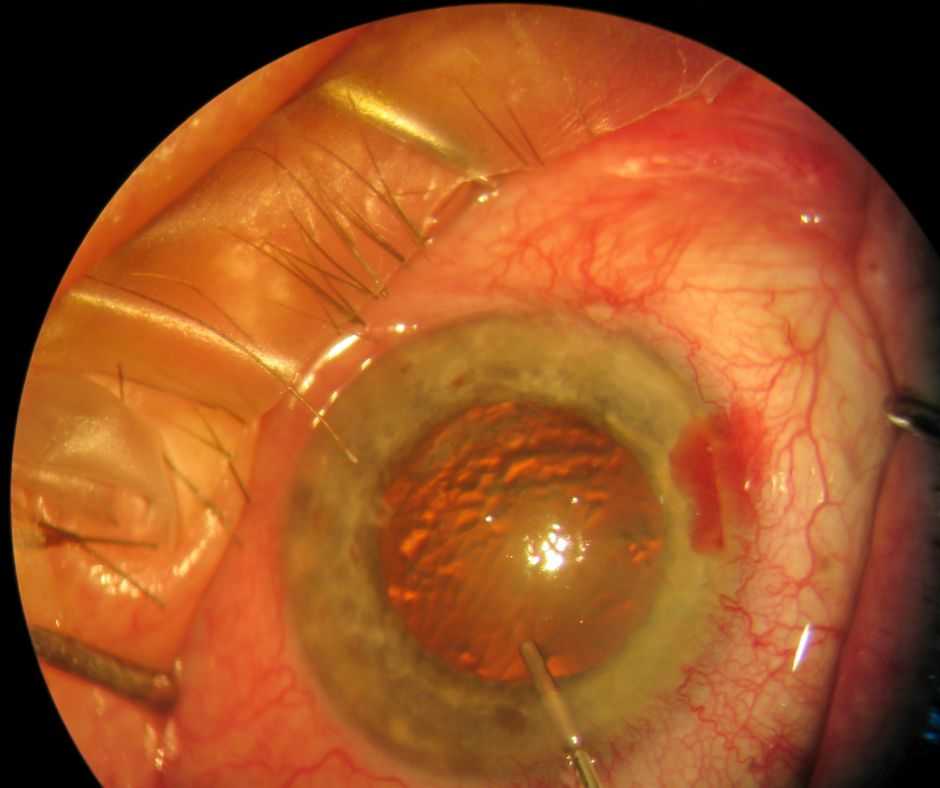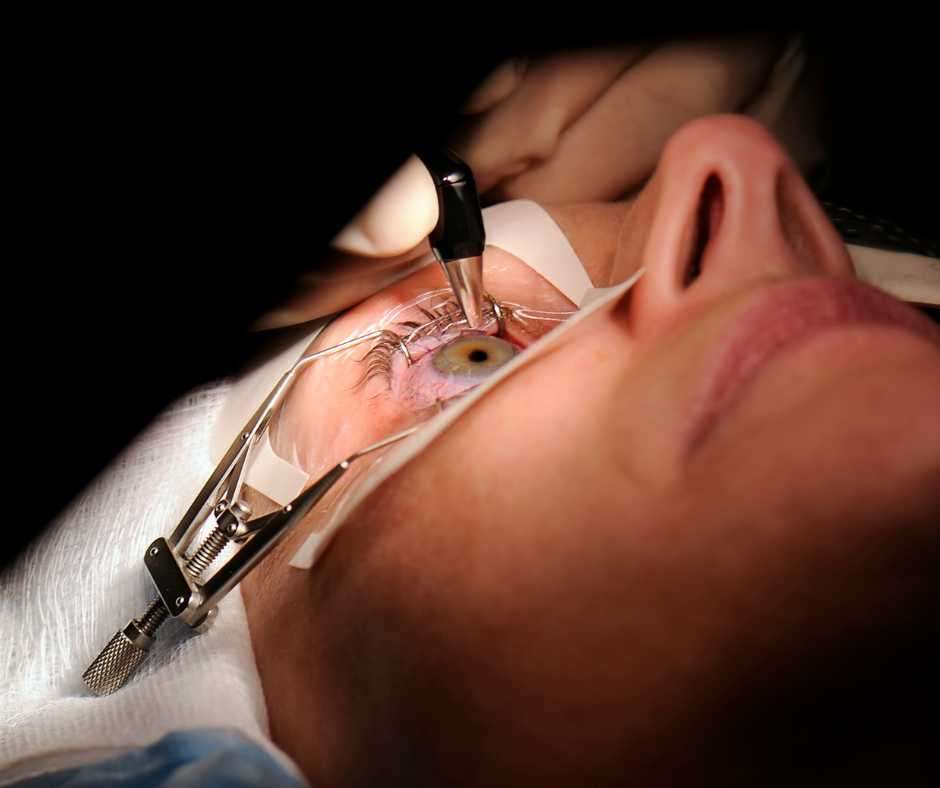What is Trabeculectomy Surgery?
Surgeons perform trabeculectomy surgery to lower intraocular pressure in patients with glaucoma. Glaucoma is a condition that causes damage to the optic nerve and can result in permanent vision loss if left untreated. One of the primary causes of glaucoma is high intraocular pressure, which occurs when the fluid inside the eye (aqueous humor) does not drain properly.
Trabeculectomy surgery involves creating a small opening in the sclera (the white part of the eye) and removing a small piece of tissue from the trabecular meshwork, which is the drainage area of the eye. This creates a new channel for the aqueous humor to drain out of the eye, reducing intraocular pressure.
Surgeons create a small flap of tissue on the eye’s surface and allow a small amount of fluid to drain out of the eye. This creates a new pathway for fluid drainage, bypassing the natural drainage system of the eye. Surgeons close the flap and create a small bleb (or bubble) on the eye’s surface to allow fluid to continue draining.
Surgeons usually perform trabeculectomy surgery under local anesthesia as an outpatient procedure. After the surgery, doctors prescribe eye drops to prevent infection and reduce inflammation. They also advise patients to avoid strenuous activity and heavy lifting for a few weeks to allow the eye to heal.

How is Trabeculectomy Operation Performed?
A trabeculectomy is a surgical procedure used to treat glaucoma, a condition that damages the optic nerve and can lead to blindness. The surgery involves creating a new drainage channel for the aqueous humor (fluid in the eye) to reduce intraocular pressure.
Here are the steps involved in a trabeculectomy surgery:
- Anesthesia: The patient is given local anesthesia to numb the eye and the surrounding area.
- Incision: A small flap of tissue is created in the sclera (white part of the eye) using a sharp blade or laser.
- Creation of a drainage channel: Surgeons create a small hole in the underlying tissue (the trabecular meshwork) to form a new pathway for the aqueous humor to drain out of the eye.
- Suturing: The flap is sutured back in place with very fine stitches.
- Bandage: A bandage contact lens may be placed on the eye to protect it and promote healing.
Doctors give patients eye drops and post-operative care instructions, including advice to avoid strenuous activity and keep the eye clean and dry. They schedule follow-up appointments to monitor the eye’s healing and check the intraocular pressure.
What are the short-term effects of Trabeculectomy Operation?
Surgeons treat glaucoma with trabeculectomy surgery by creating a new drainage pathway for fluid to lower intraocular pressure. The short-term effects of this surgery can vary depending on the individual, but some common effects include:
- Mild to moderate pain or discomfort in the eye after surgery.
- Swelling and redness of the eye and surrounding tissues.
- Blurred or hazy vision for a few days or weeks.
- Sensitivity to light.
- Itching or mild irritation of the eye.
- Watery eyes or excessive tearing.
- Eye pressure changes or fluctuations.
It’s important to follow your doctor’s instructions for post-operative care, including taking any prescribed medications, avoiding strenuous activities, and attending follow-up appointments. If you experience severe pain, vision changes, or any other concerning symptoms after trabeculectomy surgery, be sure to contact your doctor immediately.
What are the long-term effects of Trabeculectomy operation?
Surgeons typically use trabeculectomy to treat glaucoma, a condition that damages the optic nerve and can lead to vision loss. During a trabeculectomy, a surgeon creates a small hole in the white part of the eye (sclera) and removes a small piece of the eye’s drainage tissue to create a new drainage channel for excess fluid to flow out of the eye, reducing pressure within the eye.
The long-term effects of trabeculectomy surgery can vary depending on several factors, including the individual’s age, the severity of their glaucoma, and how well they follow their post-operative care instructions.
Some potential long-term effects of trabeculectomy surgery include:
- Decreased intraocular pressure: The main goal of trabeculectomy surgery is to reduce intraocular pressure, which can help slow or prevent further damage to the optic nerve. In many cases, trabeculectomy surgery is successful in achieving this goal, and patients may experience lower intraocular pressure levels for years after the procedure.
- Reduced dependence on glaucoma medication: Prior to surgery, many patients with glaucoma need to use eye drops or other medications to control their intraocular pressure. Trabeculectomy surgery can often reduce the need for these medications, which can help patients save money and avoid potential side effects.
- Risk of complications: As with any surgical procedure, there is always a risk of complications with trabeculectomy surgery. Some potential long-term complications may include cataracts, vision loss, infection, or scarring of the eye tissue.
- Need for ongoing monitoring: Even after successful trabeculectomy surgery, patients with glaucoma will typically need to continue monitoring their eye health on an ongoing basis. This may include regular eye exams and intraocular pressure checks to ensure that the surgery is continuing to effectively manage their glaucoma.
Trabeculectomy can have positive long-term effects for glaucoma patients, reducing intraocular pressure and medication needs. However, potential risks exist, so patients should consult their ophthalmologist to choose the best treatment.
What is the recovery process for Trabeculectomy operation
The recovery process refers to the series of steps, actions, and treatments that an individual undergoes to regain physical, emotional, or mental health after an illness, injury, or traumatic event.
The recovery process may vary depending on the type and severity of the illness, injury, or trauma, as well as the individual’s age, overall health, and personal circumstances. Generally, the recovery process can involve the following steps:
Diagnosis: The first step in the recovery process is to identify the underlying cause of the illness, injury, or trauma.
Treatment: Once the diagnosis is made, a treatment plan is developed based on the individual’s condition and needs. Treatment can include medications, surgery, physical therapy, counseling, and other interventions.
Rehabilitation: After the initial treatment, rehabilitation may be necessary to help the individual regain physical, emotional, and mental function. This can include physical therapy, occupational therapy, speech therapy, and other forms of rehabilitation.
Support: During the recovery process, individuals need to have access to social and emotional support. This can include family, friends, support groups, and mental health professionals.
Maintenance: After the recovery process is complete, individuals need to continue to engage in healthy behaviors and maintain their physical, emotional, and mental health.
Overall, the recovery process can be a challenging and complex journey, but with the right support and resources, individuals can successfully regain their health and well-being.
What to expect after surgery procedure
- Taking steroid eyedrops after surgery promotes healing and prevents scarring.
- Cover your eye with a shield while you sleep, so you do not accidentally press on the eye.
- Protect the eye by avoiding eye rubbing.
- Avoid heavy lifting, straining, or vigorous exercise.
How can I prepare for Surgery?
Preparing for surgery is important to ensure that the procedure is safe and successful.
Here are some general tips on how to prepare for surgery:
Follow the instructions of your surgeon and healthcare team: Follow your surgeon’s and healthcare team’s instructions on eating, drinking, and preparing for surgery.
Get enough rest: Getting adequate rest before surgery is important. Try to get enough sleep the night before the surgery.
Stop smoking: If you smoke, it’s best to quit before having surgery.
Avoid alcohol and drugs: Alcohol and recreational drugs can interfere with the anesthesia and medication used during surgery. It is important to avoid these substances before surgery.
Arrange for transportation: Make sure you have someone who can drive you to and from the hospital or surgery center.
Arrange for post-operative care: Depending on the type of surgery, you may need someone to help you with daily activities such as bathing, dressing, and cooking after the surgery.
Your doctor may ask you to avoid eating or drinking for a certain period before the surgery, depending on the type of procedure. It is important to follow these guidelines to prevent complications during the procedure.
Bring necessary items: Make sure to bring any necessary paperwork, identification, and insurance information with you on the day of the surgery.
Ask questions: If you have any questions or concerns about the surgery, do not hesitate to ask your surgeon or healthcare team. They can provide you with more information and help alleviate any concerns you may have.
Remember that every surgery is different, and your surgeon or healthcare team may have specific instructions or guidelines for your surgery. Following these instructions can help ensure a safe and successful surgery.
How successful is trabeculectomy surgery
Surgeons perform trabeculectomy to treat glaucoma by reducing intraocular pressure (IOP).The success of trabeculectomy surgery depends on various factors, including the patient’s age, the severity of glaucoma, and the surgeon’s experience.
In general, trabeculectomy surgery has a high success rate in reducing IOP and slowing down the progression of glaucoma. According to the American Academy of Ophthalmology, trabeculectomy surgery can lower IOP by an average of 30-40%, and up to 80% of patients may have their IOP reduced to a safe level after surgery.
However, trabeculectomy surgery is not without risks and potential complications. Some possible complications include infection, bleeding, cataract formation, scarring, and hypotony (abnormally low IOP). The risk of complications can be minimized with proper preoperative evaluation, surgical technique, and postoperative management.
Overall, trabeculectomy surgery is a highly effective treatment for glaucoma, but each patient’s circumstances must be evaluated to determine the potential risks and benefits of the procedure.
Trabeculectomy surgery cost in india
The cost of variants/procedures for a private room can range from 25,000 to 75,000.
Trabeculectomy surgery Recovery Tips
Recovery from trabeculectomy surgery can take several weeks, and it is important to follow your doctor’s instructions to ensure the best possible outcome.
Use prescribed eye drops: Your doctor will prescribe eye drops to help control inflammation and prevent infection.
Avoid rubbing your eyes: Rubbing your eyes can irritate and may increase the risk of infection. If you feel the need to rub your eyes, use a clean tissue and be gentle.
Rest your eyes: Avoid reading, watching TV, or using a computer for extended periods.
Avoid strenuous activities: Avoid activities that can increase pressure in your eye, such as bending over, lifting heavy objects, or straining.
Wear an eye shield: Your doctor may provide you with an eye shield to wear while you sleep to protect your eye from accidental injury.
Attend follow-up appointments: Your doctor will schedule follow-up appointments to monitor your recovery. It is important to attend these appointments to ensure that your eye is healing properly.
Follow your doctor’s instructions regarding medication: Your doctor may prescribe pain medication or other medications to help with your recovery.
Avoid getting water
Can trabeculectomy improve vision
Surgeons use trabeculectomy to treat glaucoma, a condition that damages the optic nerve and can lead to vision loss. While the procedure primarily aims to reduce intraocular pressure and prevent further optic nerve damage, it can also improve vision in some cases.
The extent to which trabeculectomy can improve vision depends on a variety of factors, including the severity and duration of glaucoma, the presence of other eye conditions, and the success of the surgery itself. In some cases, trabeculectomy can lead to significant improvements in visual acuity, particularly if the glaucoma is caught early and treated promptly.
It is important to note that trabeculectomy does not guarantee a solution for vision problems caused by glaucoma. Some patients may experience little to no improvement in their vision after the procedure, and any surgery carries the risk of complications. It is important to discuss the potential risks and benefits of trabeculectomy with your eye doctor to determine if it is the right treatment option for your specific needs.
Author Details:
Dr. Sushruth Appajigowda holds a prominent position as a Cornea, Cataract, Glaucoma, and LASIK Surgeon in Bangalore. He serves as the chief Cataract and Refractive surgeon at Vijaya Nethralaya Eye Hospital, Nagarbhavi Bangalore. Renowned as one of the finest LASIK surgeons nationwide, he brings with him over 12+ years of experience across multiple LASIK platforms, including ZEISS, ALCON, SCHWIND, AMO, and Bausch and Lomb. Having successfully conducted over 5000 LASIK procedures, Dr. Sushruth holds the title of a Certified Refractive Surgeon and a Fellow of the All India Collegium Of Ophthalmology. Furthermore, he stands as a distinguished speaker at various National and International Forums, using his expertise to guide you in selecting the most suitable procedure based on your health requirements.


